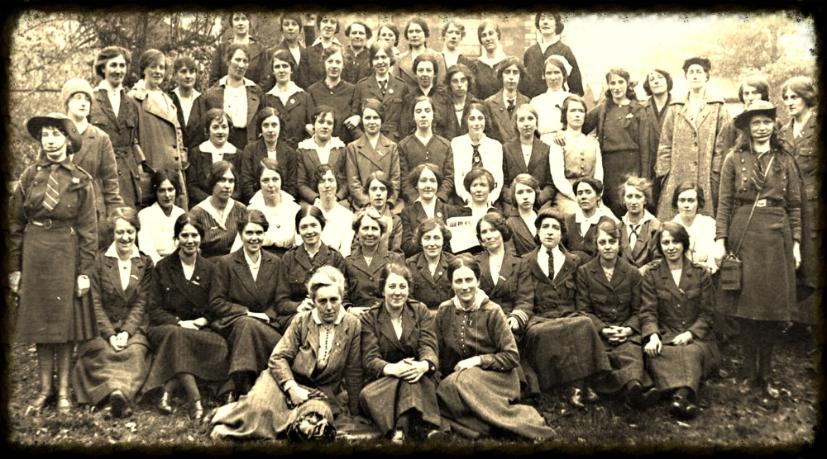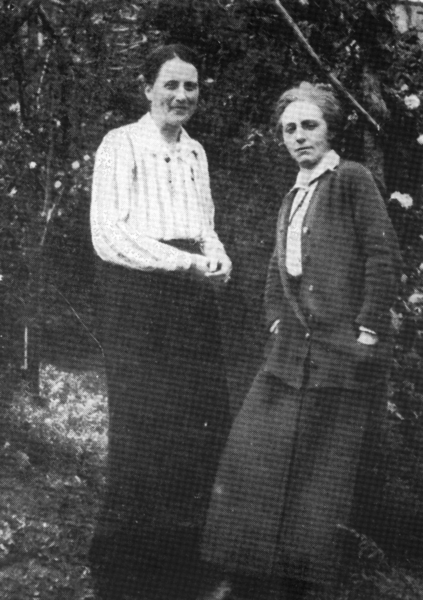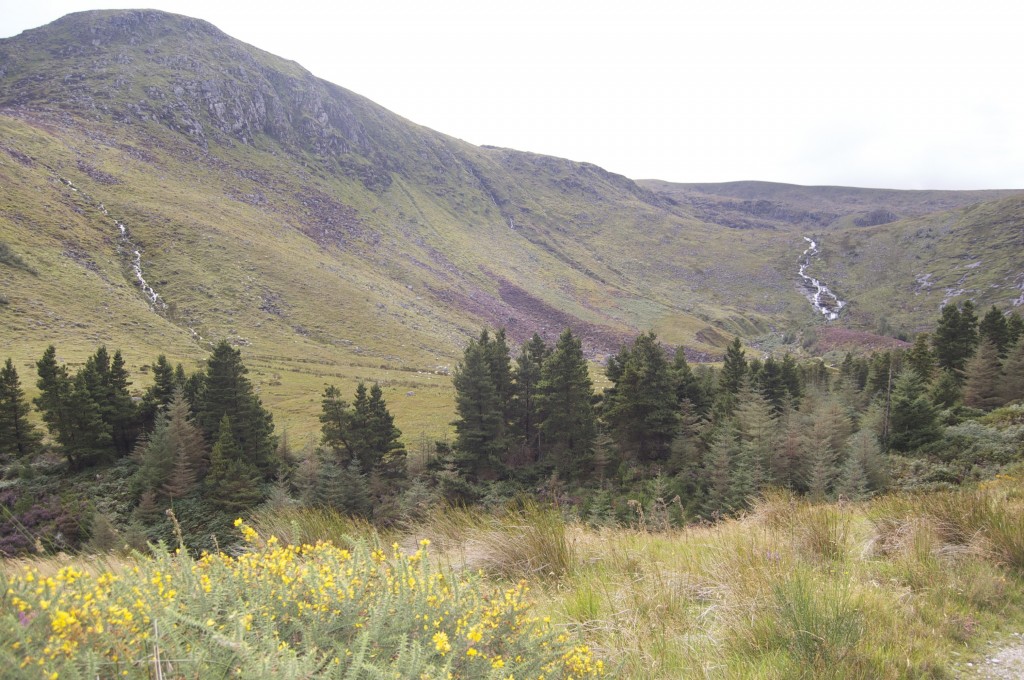Together in Arms
Kathleen Lynn’s relationship with Madeleine ffrench-Mullen
by Carmel E. Darcy
Why are the names of Dr. Kathleen Lynn and Madeleine ffrench-Mullen inseparably linked?
Using mainly the diaries of Kathleen Lynn, I will examine the thirty-year relationship between Kathleen and Madeleine in this paper. What was the nature of their relationship, and if they were alive today would they be regarded as lesbians? Who were their friends, and did they move in a circle of like-minded women? Was their relationship an open secret among their friends? How did Kathleen get on with men and is there any evidence of a male relationship? What, if anything does Margaret Ó hÓgartaigh, Kathleen Lynn’s biographer and a leading authority on her life, say on the subject. I will endeavour to answer these questions. How their families viewed their relationship will also be looked at, as will the social constraints of such a union in Ireland, in the early part of the twentieth century.
Both women were of the establishment class and were comfortably well off. They lived together in Rathmines Dublin for thirty years and were devoted to each other. In the words of Marie Mulholland – ‘Madeleine and Kathleen were regarded as a team by friends, comrades and colleagues, and if alive today would be called lesbians’. (Marie Mulholland, The politics and relationships of Kathleen Lynn). Roy Foster in his book Vivid faces, describes their thirty-year relationship as ‘having all the marks of a marriage’.
Kathleen was born in 1874 and Madeleine in 1880 but they did not meet until 1913 when Kathleen was 39 years old and Madeleine 33 years old. They began to live together in 1915 and continued to do so until Madeleine’s death in 1944. It is difficult to tell if they had other relationships with males or females before this time, as Kathleen did not begin to write her diary – from which most of the information for this paper has been taken – until 1916. The diaries have been transcribed by Margaret Connolly and are held in the College of Physicians of Ireland in Kildare Street. They span forty years until Kathleen’s death in 1955. Madeleine also wrote a short diary while in prison, covering the period between 5th and 20th May 1916.
In the diaries we find evidence of a gentle and loving relationship between the two women. In Kathleen’s diary Madeleine is generally referred to as ‘dearest MffM’. In her evidence to the Bureau of Military history in March 1950, Kathleen describes Madeleine as her ‘closest friend’. Madeleine was in hospital having a goitre removed in December 1916 and Kathleen anticipates her discharge by writing ‘Madeleine, coming home to me tomorrow’.
Rosamund Jacob was a friend to both women and she records in her diary that neither Kathleen or Madeleine ‘had any use at all for men’. She records going to their house in Rathmines and speaking to both while ‘they breakfasted in bed, as was their custom’, (Rosamund Jacob diary, 21 September 1920). Like any couple they enjoyed celebrating special events and Kathleen recorded that they were ‘out ‘til dawn’ on the night in 1920 when both were elected to Rathmines and Rathgar Urban District Council. They also fretted over one another in times of sickness, loss or trouble and particularly during times of curfew when one or other would be away from home late at night.
Although Madeleine’s mother was a frequent visitor to their home in Rathmines, there is no evidence that Madeleine ever accompanied Kathleen on visits to Cong in Mayo when Kathleen visited her father and sisters. Kathleen had a fraught relationship with her family mainly due to her republican leanings but perhaps also due to her relationship with Madeleine.
Kathleen worried over Madeleines health and often mentions in the diaries how hard Madeleine worked in St Ultan’s Hospital, saying that she was ‘killed with work’. Kathleen’s health was more robust than Madeleine’s but she was still prone to colds and ‘flu and on one occasion writes how she promised Madeleine that she would ‘stay in bed all day’, which would have been a very rare thing for Kathleen to do. Throughout her diary Kathleen often mention small gifts being given to her by Madeleine, mostly plants and flowers.
Of necessity Kathleen was often away from home but always reported how nice it was to return and how happy Madeleine always was to see her. In summer of 1919 Madeleine went on holiday with her mother and Kathleen recorded on her return – ‘great to see Madeleine again, she looks well’. Small personal events such as Madeleine getting a new coat are also recorded and Kathleen remarked how well she looked wearing it.
In June 1922 Kathleen was in Waterford with the Republicans and thinking of home ‘longed to know how they all were’. In December of that year Kathleen was in Manchester and reported that she was ‘sorry to leave M again so soon’.
The group of women in which Kathleen and Madeleine moved were educated, independent and spirited and perhaps did not match the picture of the ideal woman of the time who stayed at home and took on the views and politics of her husband. Women at the beginning of the twentieth-century were valued as wives and mothers. However, Kathleen and Madeleine and their friends were involved in the Suffrage Movement, and the Cultural Revival. Some of these friends were also in female partnerships, such as Louie Bennett and Helen Chenevix, Eva Gore-Booth and Esther Roper and Elizabeth O’Farrell and Julia Grenan.

The women of 1916 , with Mullen (left) and Lynn (right) in the front row (Image courtesy :Kilmainhamtales.ie)




